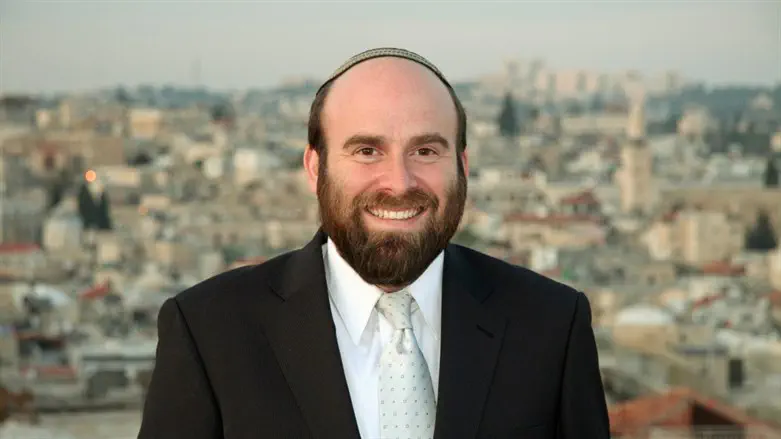
Our prayer on behalf of the State of Israel describes it as the “beginning of the flowering of our redemption.” Indeed, the miraculous founding of the state and the subsequent gathering of our people from over one hundred countries inspired many to see the state as the beginning of our geulah (redemption).
Unfortunately, the State of Israel has faced many low points since then, including the most recent October 7 attack. This attack, along with the challenges of the past eighteen months, has led some to question whether the state is truly part of our redemption.
Studying the redemption process can help answer this question. Chag HaPesach, the holiday commemorating our first redemption and leading into Yom Ha’atzma’ut, is the best time for this study.
Yetziat Mitzrayim — Where It All Began
The nevi'im Michah and Yeshayahu both describe the final redemption as a continuation of Yetziat Mitzrayim. Similarly, the Maharal saw Yetziat Mitzrayim as the model for all future redemptions. Without the paradigm of the Exodus, the final geulah would be impossible.
Building off pesukim that describe Yetziat Mitzrayim in the present tense, Rav Kook characterized the redemption as an “ongoing process.” The redemption from Mitzrayim and the future final redemption are both part of one continuum. Though we may not perceive any progress in our redemption and may even feel like we are receding, the redemptive process continues unabated.
This approach explains why, in addition to Yetziat Mitzrayim, the Haggadah also mentions geulot throughout the generations (V'hi She'amdah) and includes prayers for the final geulah: “V'nodeh lecha shir chadash al geulateinu v'al pedut nafsheinu,” “L'shanah haba'ah b'ar'ah d'Yisrael,” and “L'shanah haba'ah b'Yerushalayim.”
Change of Pace
Despite the relationship between future and past geulot, Yeshayahu draws a significant distinction — the eventual redemption will unfold slowly, instead of “b'chipazon” (in haste).
The Torah emphasizes that the exodus from Mitzrayim was “b'chipazon.” It is why the Jews in Egypt had to devour the Korban Pesach quickly and why we eat matzah on Pesach instead of chametz. The final redemption, on the other hand, will happen slowly. The Yerushalmi compares it to the sunrise, which transpires bit by bit with continually increasing light.
Following this line of thought, Rashi explains that the Prophet Zecharyah's mention of a day that is “neither day nor night” refers to the twilight stages between exile and redemption, which are “not yet the full light of the next world, but also no longer the dark of night because we are free of the pain of subjugation to foreign powers.”
Rashi's words describe today's reality. Thankfully, we live in a sovereign Jewish state, but we still face significant physical and spiritual challenges. Those disillusioned by the fact that our redemption is still incomplete should remember that sources dating back to Yeshayahu and Zecharyah predicted a slow progression.
Why We Take It Slow
Living in the generation experiencing this slow progression, we wonder why the final redemption needs to occur this way. Why can’t we have a speedy redemption like the one from Mitzrayim?
Many commentaries suggest that the first redemption needed to be a quick and clean break from the Egyptian culture because the Jewish people were forging their own identity. They required a sharp separation from the Egyptian society they had assimilated into. The final geulah, on the other hand, builds off a meaningful Jewish identity we have established over millennia. It does not need to occur as swiftly or abruptly.
Rav Kook adds that the slow pace is not just because it need not be quick, but also because it needs to be deliberately slow so it can accomplish two critical goals.
First, our exile was meant to impact our host societies. As our redemption aims to redeem the entire world, we need to move slowly to ensure that we bring the rest of civilization along with us. Second, to reach the final redemptive peak, we must sharpen our unique identity and distinguish between the good we take from exile and what should be left behind.
The ultimate redemption consists of more than just our return to and rebuilding of Eretz Yisrael. It is about the Jewish people and the world reaching our ideal form. This formative process takes time.
Ge’ulah 5785
Rav Kook’s points are very relevant to our reality. Sadly, the past eighteen months have exposed the terrible moral rot prevalent around the globe, as well as within the Jewish people. We have seen a blurring of the line between good and evil, right and wrong, and even truth and falsehood.
Redemption requires us to reinstate the distinction between good and evil. We must not only be in the right but also help others appreciate why that is true. Israel and the Jewish people continue to suffer because we have not yet succeeded in explaining how the State of Israel is part of the world’s Divine redemption. Cogently presenting ourselves this way is critical to completing the redemption for ourselves and the world.
May our reflection on the goals of a slow redemptive process help us realize them and facilitate the completion of the geulah process!
Rav Reuven Taragin is the Dean of Overseas Students at Yeshivat Hakotel and the Educational Director of World Mizrachi.
His new book, Essentials of Judaism, can be purchased at rabbireuventaragin.com
